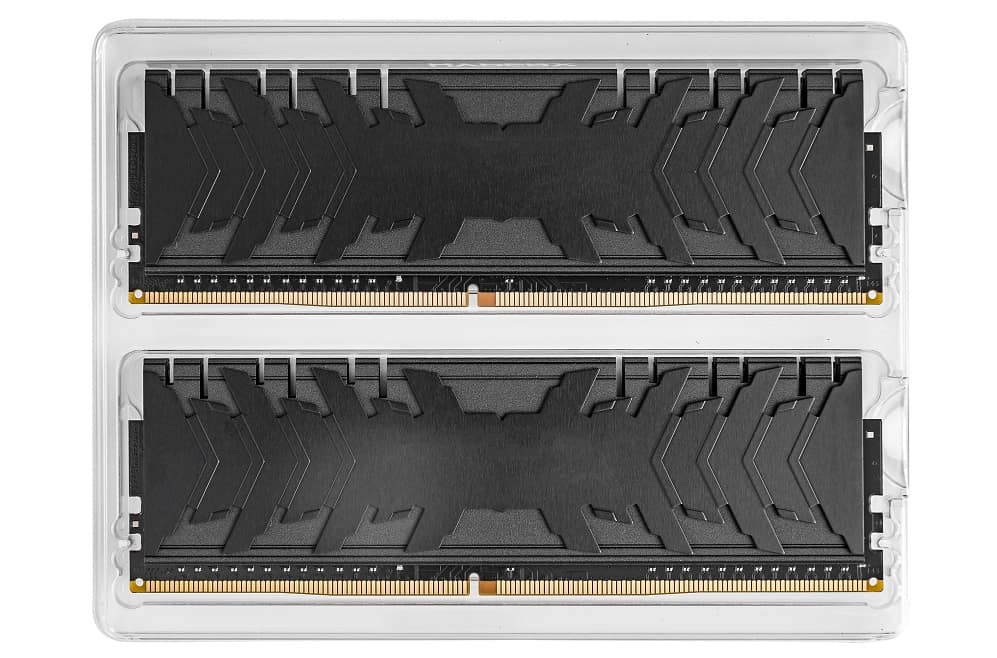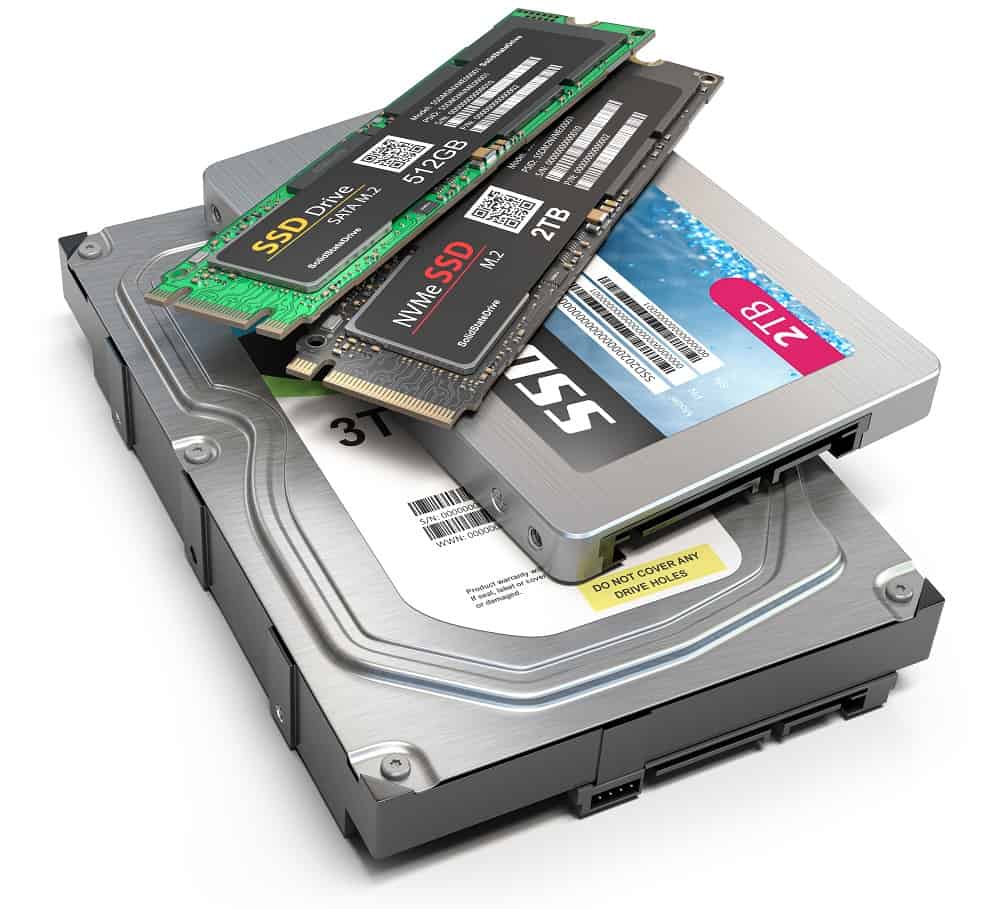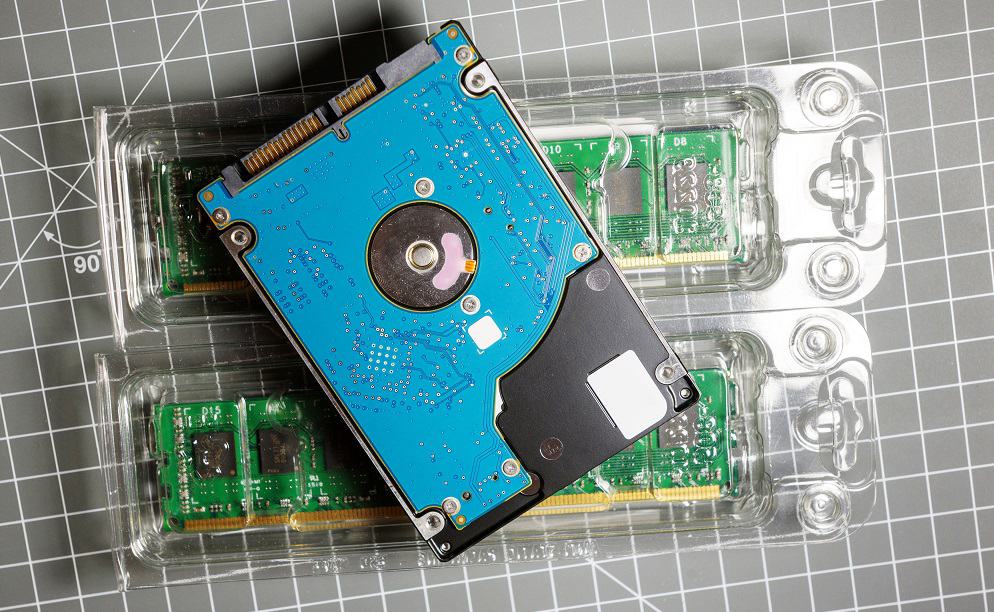Memory has been used interchangeably to refer to RAM and storage. While both RAM and storage retain data, the nature and roles of these two types of memory in a computer system differ and are integral features in the proper functioning of a computer system.
Random Access Memory or RAM is the computer's short-term memory responsible for the rapid delivery and retrieval of instructions. Storage, on the other hand, is the computer's permanent memory responsible for the long-term storage of data and files.
This article will define RAM and storage and discuss the differences between these two types of computer memory.
Random Access Memory or RAM

The computer's primary memory is RAM. RAM stands for Random Access Memory or sometimes called DRAM or Dynamic Random Access Memory. This refers to the type of short-term memory of a computer that retrieves data instantaneously.
The RAM is a volatile memory dependent on electricity in retaining temporarily stored information. Thus, when the computer is turned off or the electrical supply is removed, the information in the RAM is deleted.
The RAM copies files from the storage when opening files and documents on the computer. As such, turning off the computer without saving progress will delete the current version of the document since it exists on the RAM instead of the storage. Saving, moreover, sends the document back to the storage and overwrites its previous version.
The RAM in a computer is either soldered to the motherboard or installed through modules and inserted into sockets in the motherboard. Today, RAM modules or RAM sticks can range from 2GB to 16GB and come in various speeds measured in MHz.
Increasing the RAM of a computer system allows for processing larger amounts of digital data at one time without a visible decrease in performance and speed.
2-4 GB of RAM is sufficient for running single applications. Increasing RAM up to 8GB or more will enable the computer to run high-end games and multimedia processes at the same time.
Storage

Storage is considered to be permanent memory for the computer. It records data indefinitely and stores it until the user deletes the file or the storage device fails. Storage devices have non-volatile memory, which means data is retained in the device even without an electrical supply.
In modern computer systems, storage devices include hard disk drives and solid-state drives. Hard disk drives (HDDs) are more. They use physical components such as the actuator arm and the read/write head to store and retrieve data. Due to its mechanical structure, it creates noise and is susceptible to physical damage.
It is also one of the bottlenecks of modern computer systems. Its use of a mechanical platter instead of a memory chip makes it a lot slower in sending and retrieving data than the RAM.
The interface between the CPU and HDD further presents a delay in the process as Serial ATA (SATA) is one of the slowest interfaces for storage devices today. Furthermore, it needs utility tools such as defragmentation to optimize performance.
The Solid State Drive (SSD) is a newer storage device that offers both storage and speed. The SSD does not have any actual physical components that run when retrieving files. It has integrated circuits similar to the RAM that can retrieve data quickly. It uses non-volatile RAM or NVRAM which retains data even when the power supply is removed.
Floating Gate Transistors or FGRs are responsible for the ability of SSDs to retain data permanently. These transistors retain an electrical charge even when the power supply is removed and records a bit of data, either 1 or 0, to indicate the presence of stored data.
Compared with the HDD, the SSD is faster yet consumes less power and space and produces less heat within the computer system. Its lack of physical components also makes it less susceptible to physical damage. However, it costs more per gigabyte of storage.
The available interface for SSDs includes SATA 3, PCIe, m.2, and NVME. Among these four interfaces, the SATA, which is similar to the interface for HDDs, is the slowest. SDDs using PCIe, m.2, and NVME display significant improvement in performance and speed and reduces the bottleneck of storage devices on modern computer systems.
Differences Between RAM and Storage
Storage devices are cheaper per gigabyte than RAM. RAM modules for modern computers range from 2GB to 32GB. Storage devices, on the other hand, can range from 60GB to over 8TB. Despite the development of SSDs with compatibility with faster interfaces, RAM is still significantly faster in retrieving data.
In terms of upgrading, RAM is more flexible to upgrade than storage devices. People can upgrade their RAM by simply inserting a new RAM module in the appropriate RAM slot when the computer is turned off. Upgrading storage devices requires a cloning of the drive and may require driver installations to fully integrate into the computer system.
External storage devices provide alternative solutions to diminishing disk space in the computer. Most external storage devices are readable on the computer through USB.
RAM, on the other hand, cannot be improved through external devices. Running out of RAM requires buying a dedicated RAM module to add to the current RAM modules existing in the computer provided there is still an available RAM slot.
Roles of RAM and Storage in a Computer System

The difference between RAM and storage constitute their respective roles in a computer system.
RAM is a temporary storage unit for data that must be retrieved instantaneously and caters to speed and performance more-so than storage. Its low storage varieties make it viable only as a temporary holding place for files and data that are currently used in the computer.
Increasing the amount of RAM on the computer leads to the increased capability of the computer to run a greater number of applications at a time without incurring speed and performance drop-offs. It also allows the user to run complex programs and applications that consume a lot of RAM to function such as video and image rendering.
RAM is also responsible for the ease of starting up a computer system. When the computer starts, the RAM becomes populated with temporary files from the computer's operating system and other applications and processes that run on start-up. It is wiped clean when the computer is turned off. Without the RAM, the computer has to retrieve everything from the storage device which significantly slows down the start-up of programs and applications.
Storage functions as the permanent holding place for all data and files on the computer. Since it does not require electricity to retain information, all system files and user files are stored in the storage device.
The CPU, however, cannot directly access the storage device, unlike RAM. It requires access to the input-output channels to retrieve data from the storage device and copy it to the RAM for processing.
Both the RAM and storage cooperate and interact to provide users with speed and performance as well as permanent storage for data and files. Running low on storage means the user must delete unused files that are populating the storage device.
Running low on memory means the number of memory resources that are consumed by running applications is starting to exceed the available memory on the RAM module. This requires the user to close running applications or to restart the computer in order to wipe the RAM.
Storage devices require more maintenance when compared to RAM. It is advisable to retain at least 10% capacity of the storage device to accommodate application files and cache.
Defragmenting a storage device, particularly hard disk drives (HDDs), after a disk cleanup will ensure that files are kept orderly to make it easier for the actuator arm to locate and retrieve data from the storage device.
Note: SSDs do not need to be defragmented. While they can become fragmented, just like HDDs, doing so can actually cause wear and tear and shorten their lifespan. It also makes no difference if the data is all in one place or scattered, seek times are unaffected.
Final Thoughts
Both types of memory perform separate yet integrated roles in ensuring smooth and seamless performance. As more complex applications such as games and multimedia processing applications emerge, RAM and storage also need to increase to accommodate ever-increasing application resource requirements.

